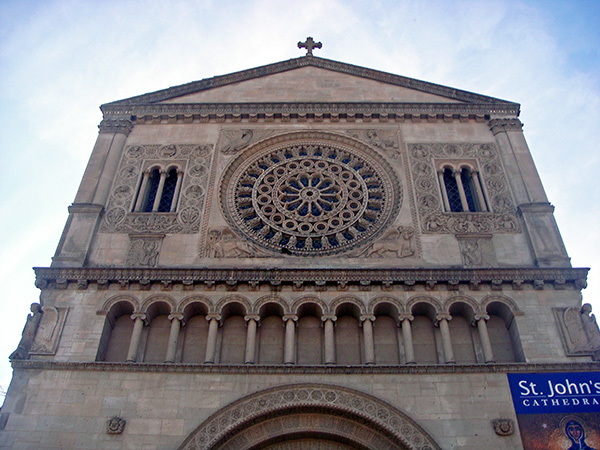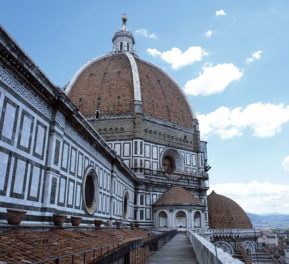
A Romanesque gem in West Adams, St. John’s Episcopal Cathedral opened its doors in 1925. Photo: Kansas Sebastian, CC BY-NC-ND 2.0
Throughout 2013, the Getty community participated in a rotation-curation experiment using the Getty Iris, Twitter, and Facebook. Each week a new staff member took the helm of our social media to chat with you directly and share a passion for a specific topic—from museum education to Renaissance art to web development. Getty Voices concluded in February 2014.—Ed.
Without a doubt, my favorite building in Los Angeles is St. John’s Episcopal Cathedral, one of the finest examples of Romanesque architecture in the country.
Located on Adams at Figueroa, St. John’s is not to be mistaken with St. Vincent’s Catholic Church, its Spanish Baroque neighbor. Built over three years beginning in 1922, it is just one of hundreds of civic and religious buildings, and thousands of residences, that were racing to completion during the roaring twenties, a time when Los Angeles was growing by leaps and bounds. Residents, patrons, and architects alike seemed to be competing with each other during this period of enormous growth. Some experimented with new forms of architecture, even as others tried to make L.A. a “serious” city by giving it monumental buildings—in other words, buildings like those that one would find back east or in great cities around the world.
Sit in St. John’s at 4 p.m. on a summer afternoon when the sunlight is just right, and the solidness of its over-two-feet-thick walls, the beams of multicolored light from its stained glass washing across the interior, and the magnificent mosaics and the triptych constructed by artisans from Oberammergau provide a sense of security and serenity not felt in many places in this fast-moving metropolis. St. John’s is one of those buildings overshadowed by the contemporary architectural icons that dot Los Angeles, but it, and they, should not be left unseen.

Mosaics and woodwork under the soaring vaults of St. John’s Episcopal Cathedral in L.A. Photo courtesy of and © St. John’s, www.stjohnsla.org




what color are the doors of the doors of the Episcopal church’s in Los Angeles?